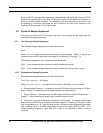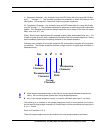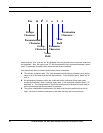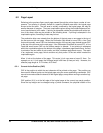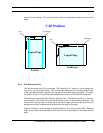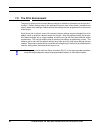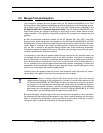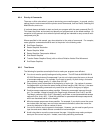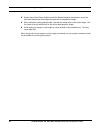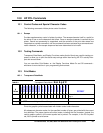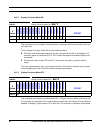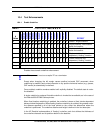
Merged Text and Graphics
HP DeskJet 600, 700, 800, 900 & HP 2000 Series PCL Developer’s Guide 21
8.0 Merged Text and Graphics
The process for merging text and graphics with the HP DeskJet 600/800/900 & HP 2000
Series printers in both portrait and landscape orientation is the same as the landscape orienta-
tion method for the HP DeskJet 520, 540, 550C, and 560C Series printers, described in the
HP DeskJet 500 Series Technical Reference Guide. The HP DeskJet 600/800/900 & HP
2000 Series printers are capable of buffering an entire page of text in either portrait or land-
scape orientation. This capability dramatically simplifies the procedure for merging text and
graphics.
As with the landscape orientation method for the HP DeskJet 520, 540, 550C, and 560C
Series printers, when merging text and graphics for the HP DeskJet 600/800/900 & HP 2000
Series printers, the text for the entire page is first sent to the printer (without a Form Feed com-
mand), where it is stored in the printer’s formatting buffer. Following the transmission of the
text, the CAP is moved to the graphics starting position with cursor positioning commands.
The graphics data for the page is then sent to the printer, and the page is printed as the graph-
ics data is processed by the printer firmware.
It is important to note that once graphics data has been received for any particular raster row
on the page, no text can be printed at that or any earlier position. You should not attempt to
alter this procedure, for instance by sending a partial page of text, a partial page of graphics,
then resuming with text transmission. Even if you do not violate the rule of sending text for a
line (or preceding a line) where graphics data has been received, attempting to intermix the
transmission of text and graphics data for a given page will render unpredictable results. Send
all text for an entire page, then send all graphics data.
Follow the last of the graphics data with a Form Feed command, which will cause any remain-
ing text data for the page to be printed, then proceed to the next page.
If you are modifying an existing DeskJet 500 Series printer driver, which has correctly
implemented the merging of text and graphics in the past, to include other features for the
HP DeskJet 600/800/900 & HP 2000 Series printers, you need not re-write your old driver.
Add support for the new features to existing code, being careful to consider the impact of
old, obsolete commands. However, if you are just beginning development, or you intend to
add merged text and graphics capabilities for the HP DeskJet 600/800/900 & HP 2000
Series printers, you should begin with the algorithm provided above.
Be aware that highly complex pages, those with numerous font changes or cursor reposition-
ing accompanying dense and complex graphics, may cause overflow condition with the printer
buffer. If you encounter this problem, you may be able to remove some of the font or position
changes in order to reduce the complexity of the page description.
!




